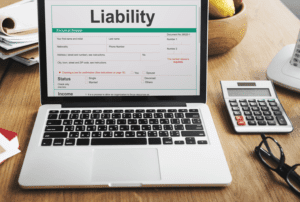
It’s the amount that would remain if the company liquidated all its assets and paid off all its debts. Some also confuse the equation’s simplicity with a lack of importance, overlooking its crucial role in preventing errors and providing a clear financial snapshot. Consistent application of the accounting equation enhances financial literacy and transparency across business operations.
Supporting Accurate Reporting

Calculating this not only completes the balance sheet but also aids in understanding the owner’s residual interest in the company. The accounting equation is also known as the basic accounting equation or the balance sheet equation. The accounting equation is a core concept of modern accounting that states that a company’s assets are the sum of its liabilities and its shareholder equity. These claims arise from credit extended to the business (liabilities) and capital invested by owners in the business (owners� equity). The claims of liabilities are significantly different than the claims of owners; liabilities have seniority and priority for payment over the claims of owners. These limitations highlight the necessity of using the accounting equation in conjunction with other financial analyses to paint a fuller picture of a company’s economic landscape.
- This mechanism not only ensures accuracy in financial records but also provides a clear view of a business’s financial position.
- By maintaining this clear separation, sole proprietors can better prepare for future investments, expansions, or transitions to other business structures.
- The accounting equation ensures that a company’s financial statements are accurate and balanced.
- Liabilities are a critical component of the accounting equation, which states that assets are equal to liabilities plus equity.
- Equity comprises various components, primary among them being retained earnings, contributed capital, and additional paid-in capital.
Understanding the Accounting Equation: Assets and Liabilities Explained

By applying the principles of the accounting equation to real-world scenarios, stakeholders can enhance their strategic decision-making capabilities, thereby fostering financial growth and stability. The balance sheet always balances out but the accounting equation can’t tell investors how well a company is performing. The accounting equation helps to assess whether business transactions carried the accounting equation may not be expressed as out by the company are being accurately reflected in its books and accounts.
- There are many ways the double entry accounting system can be expressed including the use of an accounting equation, debits and credits, and a balance sheet.
- It provides a snapshot of a company’s current financial position, but lacks forward-looking insights.
- Assets refer to resources a business owns, such as cash, inventory, property, and investments.
- Overall, the accounting equation underpins financial transparency, serving as the foundation for thorough and reliable reporting.
- For instance, when a company takes out a loan, assets (cash) increase, as do liabilities (loans payable), which keeps the equation balanced.
- Understanding account types and the accounts that fall into each account type category is essential to the accounting process.
What Is Shareholders’ Equity in the Accounting Equation?

They often perceive equity solely as ownership value, without considering its dynamic nature influenced by profit margins and retained earnings. This misconception may https://www.lafenicesrl.net/how-to-calculate-retained-earnings-formula-5/ hinder one’s ability to analyze long-term financial sustainability effectively. Financial analysts also apply the accounting equation to assess capital structure and operational efficiency. By closely monitoring changes in the accounting equation assets liabilities, it is possible to identify trends that may impact business decisions and strategic planning. Ultimately, the accounting equation is an essential framework that provides a comprehensive view of a company’s financial landscape. In financial analysis, accounting equations serve as powerful tools to interpret a company’s financial health and decision-making pathways.
- We can contrast temporary accounts, like revenue and expense accounts, with permanent accounts like cash.
- Balancing revenues and expenses is key to maintaining financial health and profitability.
- The differentiating factor is equity, which reflects the owners’ stake in the business after all liabilities have been settled.
- Some also confuse the equation’s simplicity with a lack of importance, overlooking its crucial role in preventing errors and providing a clear financial snapshot.
- They often perceive equity solely as ownership value, without considering its dynamic nature influenced by profit margins and retained earnings.
- This interplay is critical; when assets outweigh liabilities, it signifies a financially sound operation.
Equity Definition and Examples

The accounting equation is a fundamental concept that states that a company’s total assets are equal to the sum of its liabilities and its shareholders’ equity. This straightforward relationship between assets, liabilities, and equity is the foundation of the double-entry accounting system. Revenues increase net sales equity by contributing to a company’s earnings, while expenses decrease equity by reducing profits. These changes affect the accounting equation through retained earnings, ultimately impacting a company’s financial position.
- When the net realizable value of the inventory is less than the actual cost, it is crucial to adjust the inventory amount to reflect true financial standing.
- The accounting equation helps to assess whether business transactions carried out by the company are being accurately reflected in its books and accounts.
- The accounting equation is also known as the basic accounting equation or the balance sheet equation.
- The accounting equation may be expressed as a tool for assessing risk; companies with high liabilities relative to their assets may face greater financial pressures during downturns.
- Such discrepancies must be identified and rectified promptly to maintain financial integrity and promote accurate decision-making.
Moreover, it facilitates budget planning by providing a clear picture of available resources and outstanding obligations. This transparency aids in informed decision-making regarding investments and expenses, including significant costs like rent and machinery. Owner contributions, also known as capital contributions or investments, further enhance the equity section of the accounting equation.

Assets refer to resources a business owns, such as cash, inventory, property, and investments. Accounts receivable also form a part of the assets, playing a critical role in business operations by providing liquidity. When the net realizable value of the inventory is less than the actual cost, it is crucial to adjust the inventory amount to reflect true financial standing. Non-profit organizations utilize the accounting equation to track their resources and assess financial health.

FeedBack (0)